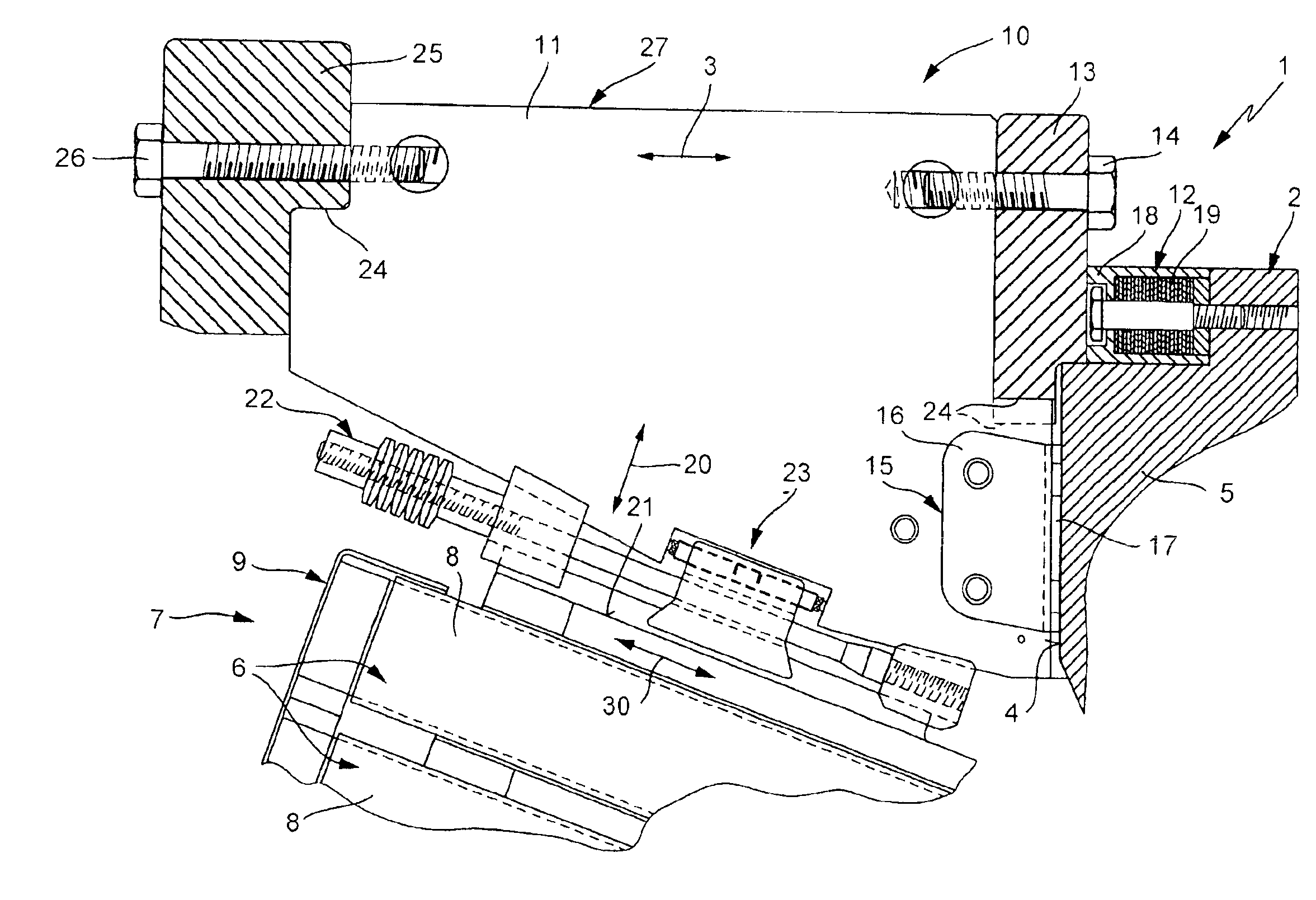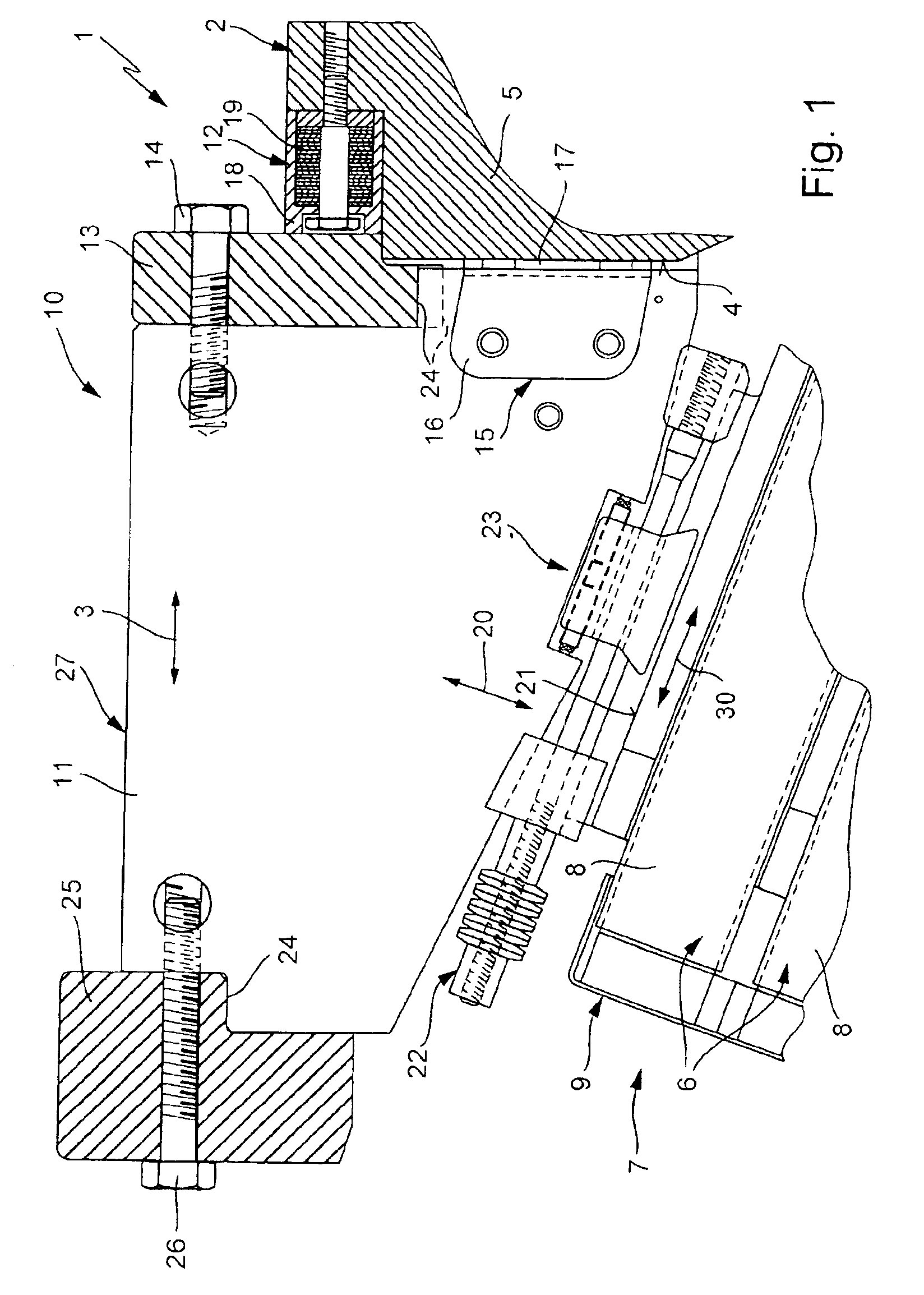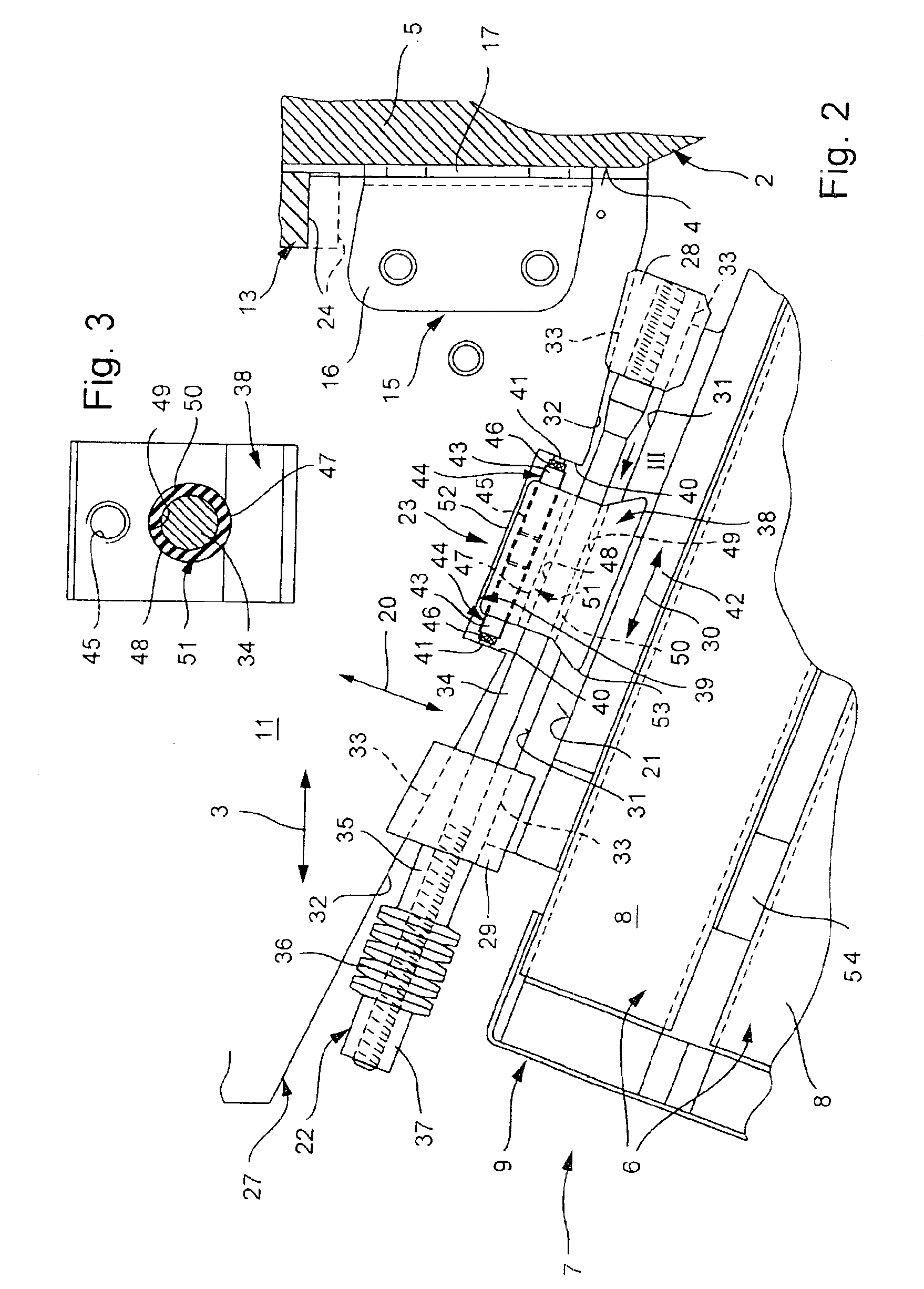Apparatus for supporting a stator end winding
a stator and end winding technology, applied in the direction of windings, electrical apparatus, dynamo-electric machines, etc., can solve the problems of reducing stress, and reducing the fatigue life of the respective stressing devi
- Summary
- Abstract
- Description
- Claims
- Application Information
AI Technical Summary
Benefits of technology
Problems solved by technology
Method used
Image
Examples
Embodiment Construction
[0019]Referring As can be seen from FIG. 1, a stator 1 (only part of which is illustrated), in particular a generator stator for a generator (which is not illustrated apart from this), which is used, for example, in order to generate electrical power in a power station, has a core 2 (which is likewise illustrated only partially) which is illustrated in FIG. 1 such that its longitudinal center axis runs essentially horizontally. In this case, the longitudinal center axis of the core 2 is not located on the surface of the drawing in FIG. 1, but, for illustrative purposes, is symbolized by a double-headed arrow 3, which runs parallel to the longitudinal center axis of the core 2 and thus represents the axial direction.
[0020]The core 2 has an axial end face 4 which in this case is in the form of a pressure plate 5 on the core 2. Two such pressure plates 5, which are arranged at the two axial ends of the core 2, can be used to brace metal-laminate segments, which are arranged between the...
PUM
 Login to View More
Login to View More Abstract
Description
Claims
Application Information
 Login to View More
Login to View More - R&D
- Intellectual Property
- Life Sciences
- Materials
- Tech Scout
- Unparalleled Data Quality
- Higher Quality Content
- 60% Fewer Hallucinations
Browse by: Latest US Patents, China's latest patents, Technical Efficacy Thesaurus, Application Domain, Technology Topic, Popular Technical Reports.
© 2025 PatSnap. All rights reserved.Legal|Privacy policy|Modern Slavery Act Transparency Statement|Sitemap|About US| Contact US: help@patsnap.com



